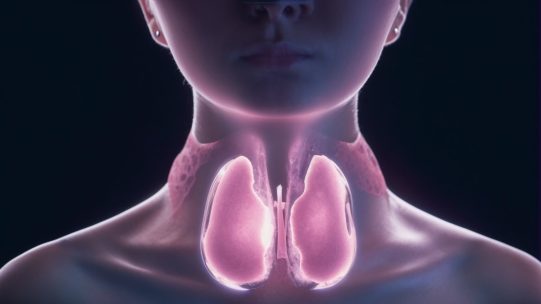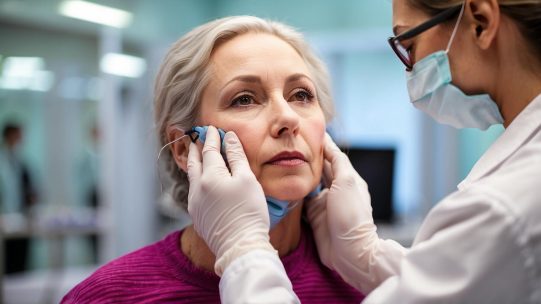Many patients with autoimmune diseases face problems of diagnosis, cost, and inattentive care

After years of suffering from bouts of debilitating fatigue, Beth Van Orden thought she had finally found the answer to her problem when she was diagnosed with Hashimoto’s autoimmune disease in 2016.
Hypothyroidism is a condition in which the butterfly-shaped thyroid gland located in the neck stops producing enough hormones needed to regulate the body’s metabolism.
There is no cure for Hashimoto’s disease or hypothyroidism. However, Van Orden of Athens, Texas, began taking levothyroxine, a synthetic thyroid hormone that is prescribed to treat common symptoms such as fatigue, weight gain, hair loss and sensitivity to cold.
In most patients, levothyroxine improves symptoms. However, some patients, like Van Alden, have trouble responding to this medication.
For her, it means going from doctor to doctor, test to test, treatment to treatment, spending about $5,000 a year.
‘I’m a pretty healthy person, both in appearance and behavior,’ Van Olden, 38, says, explaining that her symptoms are not visible. ‘But I have a hole in my gas tank. Stress makes that hole even bigger.”
Autoimmune diseases occur when the immune system mistakenly attacks and damages healthy cells and tissues. Other common examples include rheumatoid arthritis, lupus, celiac disease and inflammatory bowel disease. In total, there are more than 80 such diseases that affect about 50 million Americans. The cost of treating autoimmune diseases is estimated at more than $100 billion annually across the United States.
Despite their frequency, finding a cure to treat many autoimmune diseases is challenging and expensive. Sam Lim, clinical director of the Division of Rheumatology at Emory University School of Medicine in Atlanta, said. In addition, some patients feel that they have to struggle to get doctors to believe them. In addition, many patients with autoimmune diseases have to shell out large sums of money for treatment after diagnosis while they search for a cure.
Patients are often frustrated.” Elizabeth McCunch, an endocrinologist and thyroid specialist at Stanford University, says of patients who seek treatment.
According to Antonio Bianco, an endocrinologist at the University of Chicago and a leading expert on hypothyroidism, a lack of medical education and a lack of investment in new research are two factors hindering the overall understanding of hypothyroidism.
Douglas Ross, an endocrinologist at Massachusetts General Hospital in Boston, says some patients become angry when their symptoms don’t respond to standard treatment with levothyroxine or its drugs in combination with other hormonal agents. We have to remain open to the possibility that we are missing something,” he says.
Jennifer Ryan, 42, says she has “spent thousands of dollars of her own money” looking for answers. The Huntsville, Alabama, resident was diagnosed with Hashimoto’s disease after years of fatigue and weight gain, but her doctor didn’t recommend thyroid hormone medication because her levels seemed normal. She recently changed doctors and is hoping for the best.
“Just because you walk around in pain all day doesn’t mean there’s anything wrong with you,” Ryan says.
According to Brittany Henderson, an endocrinologist and founder of the Charleston Thyroid Center in South Carolina, which sees patients from all 50 states, insurance companies typically refuse to cover new treatments for hypothyroidism. Insurance companies want patients to use generic drugs, even though many patients do not tolerate such treatments well,” she says.
Meanwhile, the extent of thyroid problems among Americans is also affecting drug sales. Levothyroxine is among the top five most commonly prescribed drugs in the U.S. each year. But studies show it is too often prescribed to patients with mild hypothyroidism. A recent study paid for by AbbVie, the maker of Synthroid, the brand name for levothyroxine, found that the prevalence of hypothyroidism, including mild forms, rose from 9.5% of Americans in 2012 to 11.7% in 2019, according to the Medical and Pharmacy Claims Database.
As the population ages, the number of people with this diagnosis will increase, Makanchi said. Endocrine disruptors (natural or synthetic chemicals that can affect hormones) may be responsible for some of the increase, she said.
In search of answers, patients sometimes connect on social media, where they ask questions and describe their thyroid hormone levels, medications taken and symptoms. Some online platforms provide questionable information at best, but in general, social media helps patients better understand symptoms that are difficult to manage, Bianco says.
They also encourage each other.
VanOrden, who is active on Reddit, has this advice for other patients. “Don’t give up on yourself. Keep advocating for yourself. There is a doctor somewhere who will listen to you.” She began alternative treatment, taking low-dose naltrexone to treat addiction in addition to thyroid-drying medication – an option not approved by the FDA, though data on it is limited. She is now feeling better.
Research into autoimmune thyroid disease is poorly funded, and the underlying causes of immune dysfunction are poorly understood, Henderson says. The medical community is not fully aware of hypothyroid patients who are difficult to treat, but greater awareness of them and their symptoms would help fund research, Bianco says.
“I want it to be clearly recognized that these patients exist. These people are real.”









